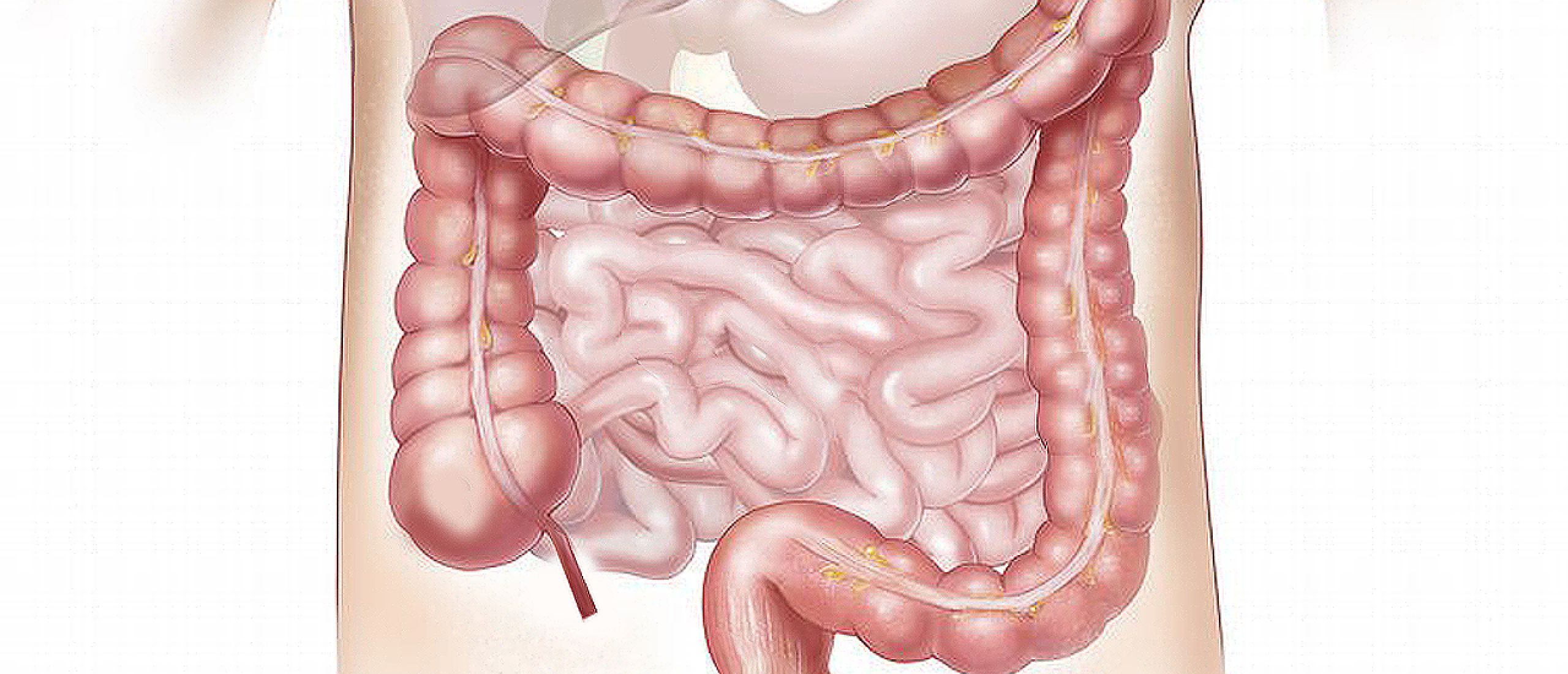
Cortisol is a stress hormone that helps the body to cope with stressors. It acts on a slower timescale than adrenaline, taking a few minutes to completely unfold. Whereas cortisol is useful during sudden stress, it becomes a problem during chronic stress and can cause disease and mental problems.
Cortisol is produced by the hypothalamus-pituitary-adrenal axis
The Hypothalamus-pituitary-adrenal axis (HPA-axis) is a hormonal system that is active during stress. The hypothalamus is part of the brain, which controls the pituitary gland at the base of the brain. The pituitary gland is a gland producing hormones. One of these hormones sends a signal to the adrenal gland, which produces the stress hormone cortisol. The cascade from the hypothalamus to the pituitary and to then to the adrenal gland forms the HPA axis.
The HPA-axis translates activity in the brain during stress to a hormonal signal that reaches the entire body. This makes it possible that stress can have many effects on the body through the stress hormone cortisol.
The HPA-axis in more detail
The HPA-axis serves to support the sympathetic nervous system during stress. Activation of the hypothalamus in the brain induces the release of a small signaling molecule, known as corticotropin-releasing factor (CRF for short). This is the very same molecule that is at the basis of the activation of the sympathetic nervous system.
 The HPA axis starts in hypothalamic neurons (blue) that release CRF (blue dots) in the pituitary gland. This stimulates the pituitary cells (pink) to release ACTH (red dots) into the bloodstream, so that it can reach the adrenal gland.
The HPA axis starts in hypothalamic neurons (blue) that release CRF (blue dots) in the pituitary gland. This stimulates the pituitary cells (pink) to release ACTH (red dots) into the bloodstream, so that it can reach the adrenal gland.
However, instead of activating the brainstem, it activates the pituitary gland. This is a hormone-producing organ, which is attached to the bottom of the brain. In response to the arrival of CRF, the pituitary gland will release another messenger molecule into the bloodstream. This molecule is a protein, known as adrenocorticotropic hormone, or ACTH. ACTH travels through the blood to the adrenal glands, prompting them to release the stress hormone cortisol.
Effects of cortisol on the body
Cortisol has a number of effects on the body that are important for dealing with a stressor that lasts longer than a few minutes. For example, cortisol increases blood pressure and cardiac output, so that more blood is delivered to the muscles. Cortisol also increases the circulating level of glucose by liberating glucose from the liver. Eating is not necessary to have enough energy to deal with the stressor. Thus, cortisol ensures that the muscles have sufficient oxygen and energy to fight off or run away from the stressor. These effects are quite similar to those of epinephrine (adrenaline) that is produced upon sympathetic nervous system activation. The difference is that epinephrine acts faster and during a shorter period of time than cortisol does.
In addition to these epinephrine-like effects, cortisol further redistributes energy. It shuts down long-term investment processes in favor of processes that need to be active to deal with the stressor. Reproductive activity will have to wait, just as growth and development. The immune system is in general also suppressed, although some cells of the immune system, especially in the skin, are put on stand-by. They are the first-line defenders against invading pathogens (bacteria, viruses), in case somebody would get wounded during the fight reaction.
But overall: survival comes first, pleasure, development and investments come later.
Finally, cortisol provides a negative feedback signal to the hypothalamus when the stress passes. In response, the hypothalamus will stop releasing CRF, and the HPA-axis will resume its low-level activity that it had before the stress.
Chronic stress and high cortisol levels lead to disease
With repeated exposure to stressors, the body either habituates to these stressors with lower HPA-axis activity over time (nothing to worry about), or sensitizes to the stressor with repeated and sustained HPA-axis activation (reason for worry). Constant HPA-axis activity goes hand in hand with chronically high cortisol levels. Cortisol levels remain also high when somebody is not able to deal with a particular stressor, even though the stress systems in the body function as they should. It can simply be too difficult to solve certain problems at work, such as having to work for a bullying boss. Under such conditions, the stress persists and becomes chronic.
Chronic stress and sustained elevated cortisol levels in the blood limit the sensitivity to negative feedback in the hypothalamus. The activity of the HPA-axis will therefore persist, probably along with the activation of the sympathetic nervous system. This turns the activation of the stress systems from something good (being able to resolve stress) into something bad: increased risk for physical and psychiatric problems.
If you have high cortisol levels due to repetitive or chronic stress, your immune system may not work optimally. You may this be more susceptible to infections and disease. Others may develop type 2 diabetes, obesity, cardiovascular disease or gastrointestinal problems. Prolonged high cortisol levels may also cause psychiatric problems. These include mood disorders such as burnout, social withdrawal, loss of libido, anhedonia (which is a condition in which you don’t enjoy pleasures in life), depression, anxiety-related disorders and insomnia.
Differences in HPA-axis reactivity between individuals
As is the case for reactivity of the autonomic system to stress, HPA-axis reactivity can vary considerably between individuals.
· In children it has been shown that most will respond with a moderate activation of the HPA-axis, which goes together with the mild activation of the sympathetic nervous system.
· A small percentage of children activates primarily the HPA-axis, and not the sympathetic nervous system, in response to stress.
· Yet others have already high cortisol levels when anticipating stress, and show therefore a minor HPA-axis response to the stressor itself.
· Some children showed, in addition to strong activity of the sympathetic and parasympathetic nervous systems, a strong cortisol response during stress, and are thus considered “multisystem reactive”.
· The small group of children who showed no sympathetic or parasympathetic reactivity also did not show a cortisol response.
In summary, there are thus six different classes of stress responses that have been detected in children. The classification is based on measurements of sympathetic, parasympathetic and HPA-axis activity before the stress occurred, and during the stress.
1. Moderate reactivity: each of the three systems is moderately active, sufficient to deal with stress, but not too strong to avoid severe stress reactions. This is considered a “healthy” stress response.
2. Parasympathetic-specific reactivity: this stress response would likely be less efficient to induce a fight or flight response, for which activation of the sympathetic system is necessary. This indicates a passive coping strategy to deal with a stressor.
3. Anticipatory arousal: Thinking about stress that might happen in the future is already sufficient to trigger stress reactions. Research suggests that this may happen on Sunday evenings or Monday mornings for many people anticipating their new week of work.
4. Multisystem reactivity: All systems are involved to deal with the stressor, and are strongly activated. This was typically found in children from families in which stress occurs on a regular basis (marital conflicts, parenting stress, etc.). These children may need all three systems to deal with frequent stress, and are in a state of heightened vigilance.
5. HPA-specific reactivity: Strong cortisol responses in the absence of sympathetic or parasympathetic activation. This would lead to less effective fight or flight responses and a slower onset of a reaction to stress. HPA-specific reactivity has been found in younger children, suggesting that stress reactions may mature during development, but more research is necessary to confirm this.
6. Underaroused: This concerns children who do not show any physiological reaction to stress. These children have been found in families with low socio-economic status. It has been suggested that they suffer from mild chronic stress, which blunts reactions to novel stressful conditions.
Stress reactions throughout life
HPA-axis activity changes over life. Most scientific studies have been conducted on children and on aging adults.
Stress during childhood
Stress experienced early in life, during childhood, can have life-long effects on the activity of the HPA-axis. Baseline activity of the HPA-axis is higher during adulthood, and some studies suggest that early-life trauma may lead to an over-reactive HPA-axis. The enhanced activity of the HPA-axis is caused by particular changes to the DNA. These changes alter the function of the DNA for life. This means that the body will produce some proteins like hormones in higher or lower quantities. And this will then change how the body will react to stress during adulthood.
Cortisol during aging in men and women
There are differences between cortisol production during stress between young adult men and women. Young women produce lower levels of cortisol in response to stressors than do young men. However, with aging, the hypothalamus becomes less sensitive to negative feedback from cortisol, so that cortisol levels rise as we age. Interestingly enough, the change in cortisol production during aging is unequal in men and women, so that older women secrete more cortisol in response to a stressor than do older men.
One size does not fit all
Due to differences in the stress responses elicited between individuals, as well as differences caused by experience and age, treatment of individuals suffering from stress-related problems should be tailored to the needs of each.
Unfortunately, there are no magic pills available that reduce stress. Stress relief should rather be sought in relaxation techniques, when stress is not severe, or in more serious cases in psychotherapy. Ideally, clinicians and psychiatrists should be aware of differences between their patients, and pair stress questionnaires with biological measurements to assess the activity and reactivity of the sympathetic and parasympathetic nervous system, as well as that of the HPA-axis. Simple measurements suffice to do this. Each hospital or clinic can make electrocardiograms, impedance cardiograms and measure breathing frequency to determine sympathetic and parasympathetic activity. Cortisol can easily be measured in the blood, in saliva and even in hairs by specialized laboratories. This will make targeted treatments possible, based on subjective experience of stress coupled with biological markers. Or, in other words, stress research and treatment are nodes where biology and psychology / psychiatry should meet.
However, the combination of biological and psychological assessments is not common practice yet. With Stressinsight, you will be informed about personality and stress, and this may help you to discuss your stress problems with your medical doctor.
REFERENCES
1. Veldhuis JD, et al. Endocrinol Metab Clin North Am. 2013 Jun;42(2):201-25.
2. Seeman TE, et al. Psychoneuroendocrinology. 2001;26(3):225











